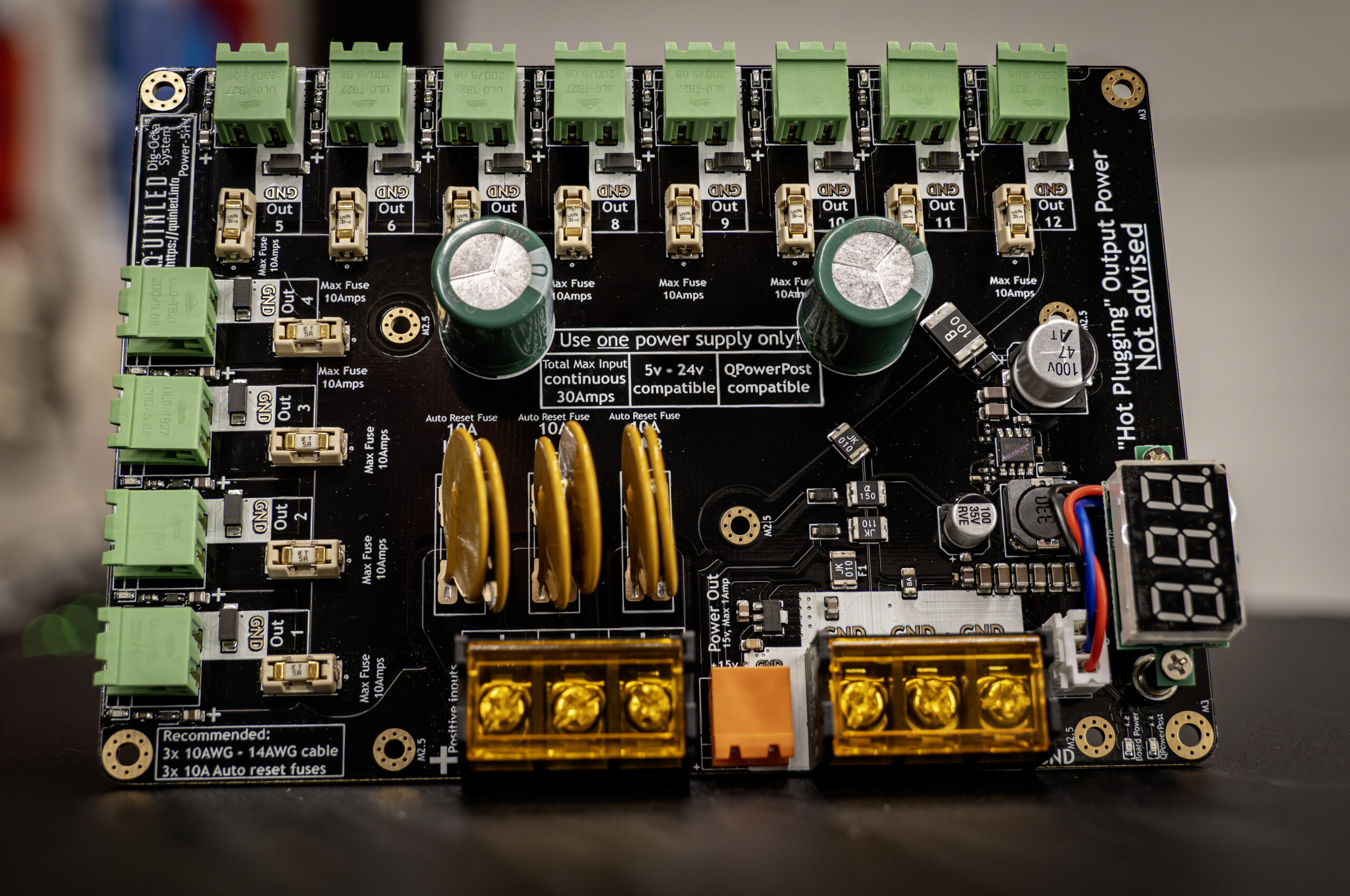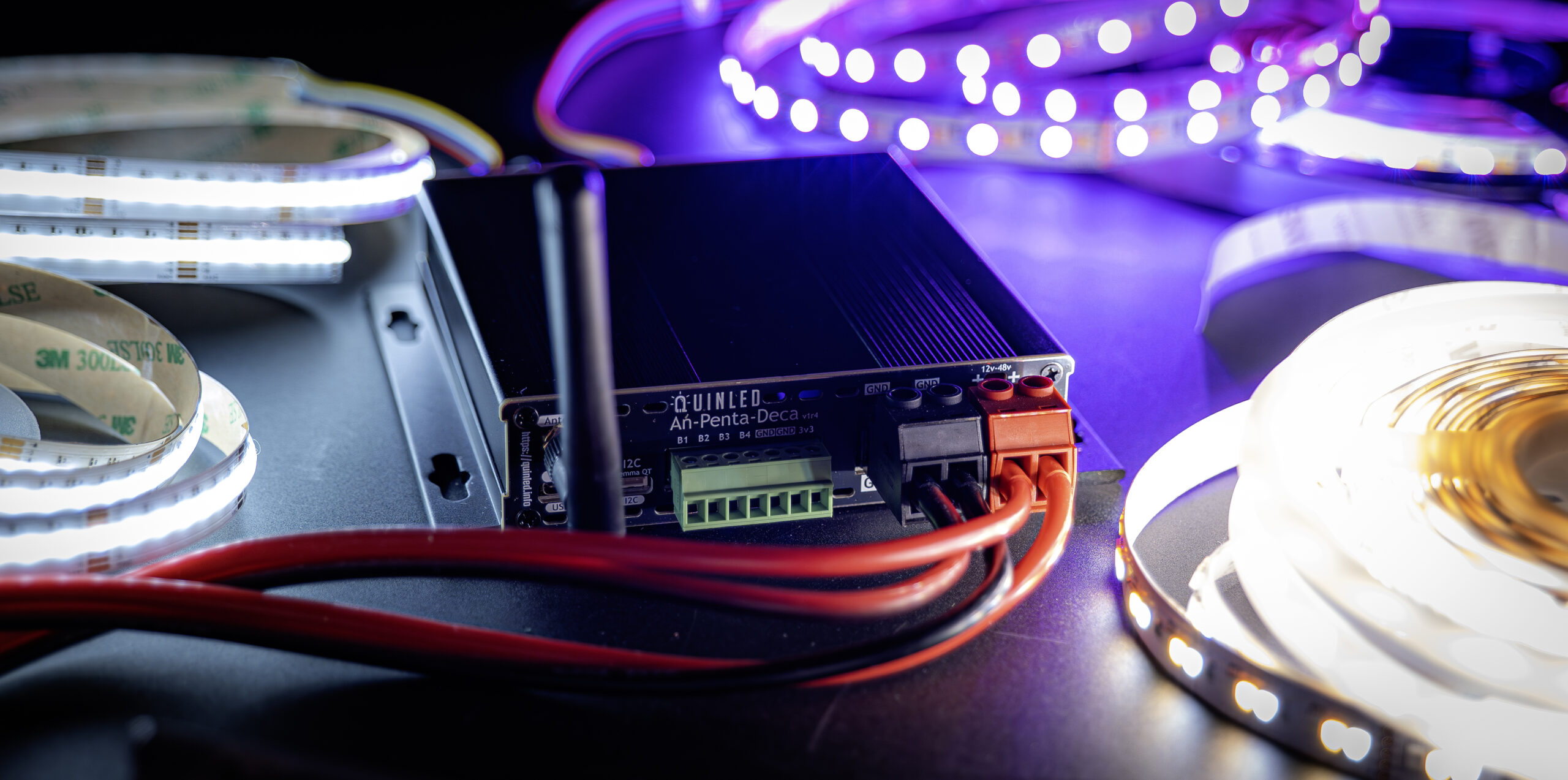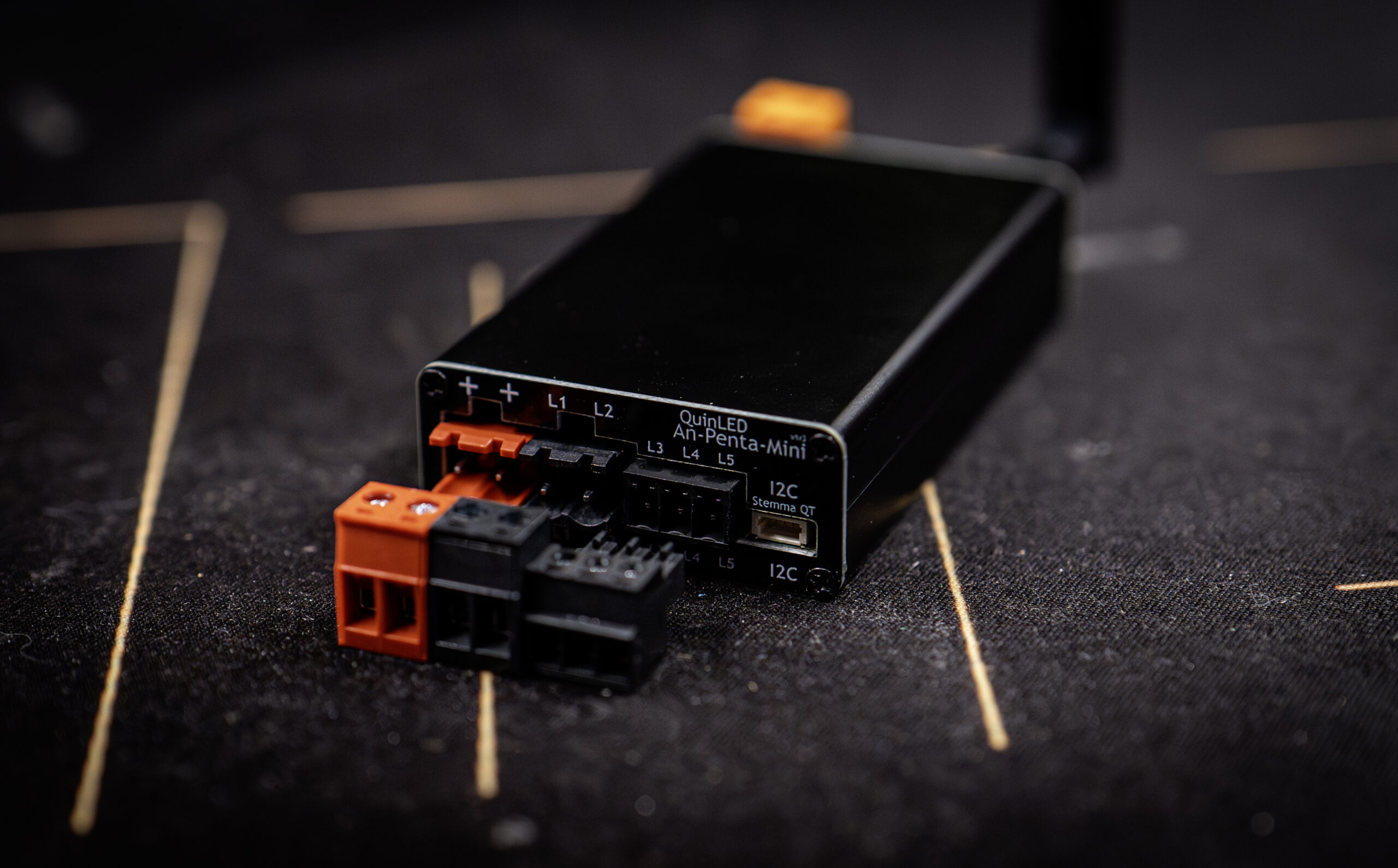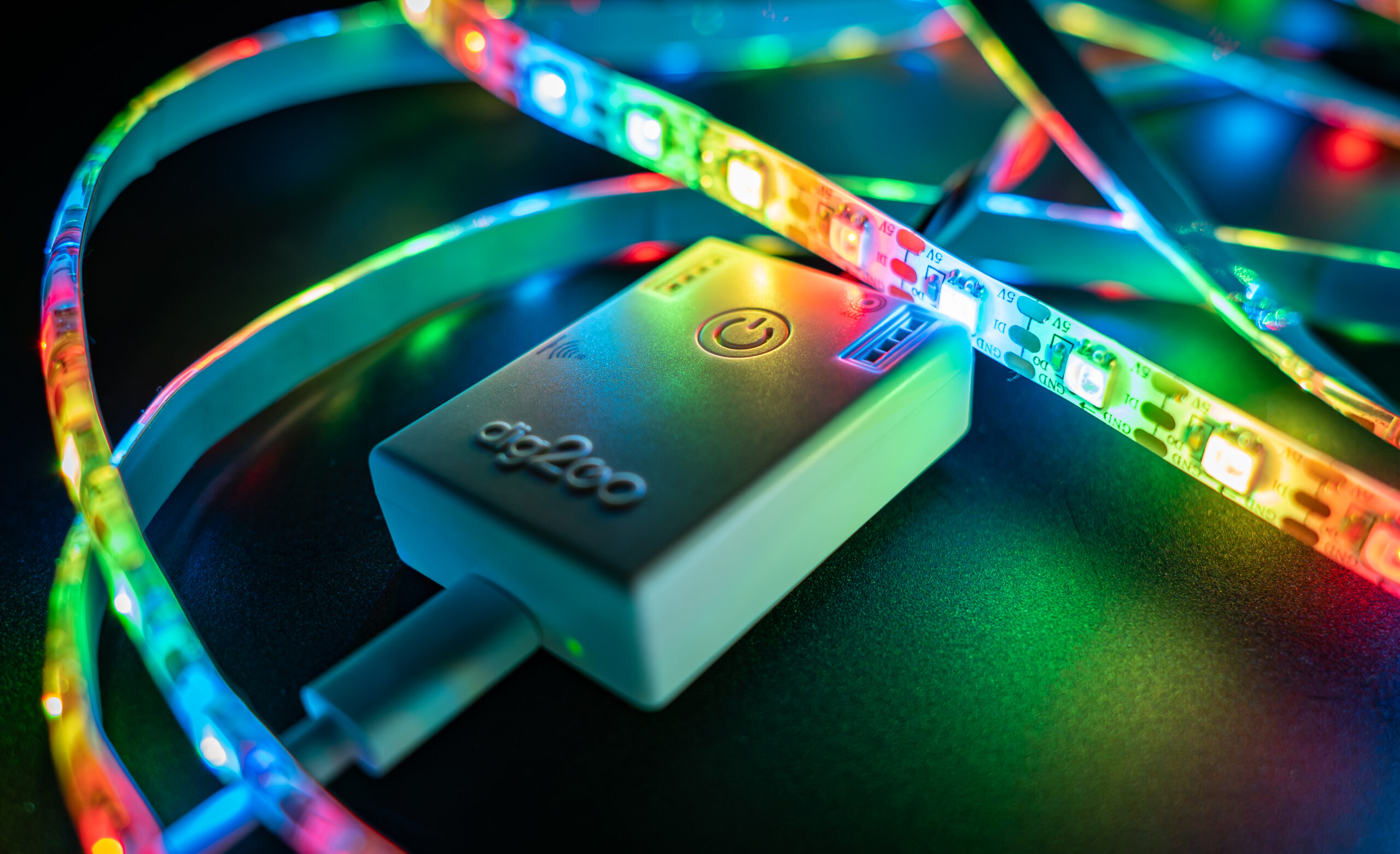What QuinLED Controller to get?
Back to Addressable LEDs section
Over the years the boards I offer have grown quite a lot, so what board should you get for your project? That’s a more difficult question then you’d imagine! I have a great video about selecting a digital controller but this article will include analog and digital. So read on first and the digital video will be available at the bottom!
Analog? Digital? What’s that about?
Controlling LEDs has been roughly divided into two sections, Analog “dumb” LEDs and Digital “IC controlled” LEDs. They each have their own pros and cons and this is generally where your journey starts!
TL;DR
If you need good to great quality white and want to use the lights for main, task or special purpose lighting, get Analog strip and controllers.
If you want it for accent lighting, effects and such, get Digital strip and controllers.
If you’d like to know why, read the following to make a properly informed choice!
Analog controller recommendations
An-Penta-Mini: If you have a fairly simple project with say 1 or 2 5m strips that are not very high power, the QuinLED An-Penta-Mini makes for a great choice.
An-Penta-Plus: If you have a more elaborate project that uses a lot of strip or very high power strips, need Ethernet or Analog + Digital combined, the QuinLED An-Penta-Plus is for you!
An-Penta-Deca: If you have an Analog project that requires lots of single white channels, many CCT channels or several individually controllable RGBCCT strips the QuinLED An-Penta-Deca is for you!
Digital controller recommendations
Dig2go: If you have a fairly simple project in which you are not going to do any power injection and maybe want to have audio reactive effects, the dig2go is for you, it’s even available in kits with everything like the controller, LED strip and power supply included, plug-and-play!
Dig-Uno: But if your project requires a higher voltage strip then 5v, the Dig-Uno supports up to 24v strip and is a good choice for between 5m to 10m (at 24v) situations. You can use it for power injection but it becomes a bit harder.
Dig-Quad: Also comes with up to 24v support but has 4 data channels and multiple fused positive outputs channels. If your project outgrows the Dig-Uno and requires power injections or multiple strips to run, the Dig-Quad is a great board for this.
Dig-Octa: The Dig-Octa has lots of “convenience of life” improvements, it comes with 8 data channels and a powerboard of choice, allowing large power supplies, lots of current and there is even a powerboard that supports up to 48v! The brainboard always come with Ethernet and the Dig-Octa makes a great central controller for various installations!
 The Power-5HV from the Dig-Octa System
The Power-5HV from the Dig-Octa System
For Digital LEDs I also have a dedicated video going through all the controller and which controller to get when:
Choosing between Analog or Digital LEDs
Analog LEDs
In the case of Analog LEDs we’re mainly talking about CV or Constant Voltage controlled LED strips. Another form of Analog LEDs are CC or Constant Current LEDs but their usage and control is very different.
Pros
- Available with very high power output (up to 38.4w/m)
- Available with great CRI/Ra up to CRI95+
- This means the white color accuracy is very good suitable for primary lighting, task lighting or things like kitchen tops or film/video lighting
- Available up to RGBCCT
- While still combined with great CRI/Ra
- High PWM capable
- Coupled with a capable controller they can easily be run at ~20Khz or higher making it “flicker free” and suitable for photo and video work
- Cheaper then Digital
- No IC per LED/zone needed thus less parts, but higher quality strip can still be more expensive
- Easy to use higher voltages for less voltage drop
- 24v common, no real downside vs 12v
- Available up to 48v for low voltage drop over long distances
Cons
- Not addressable
- Strip can only be controlled as a whole
- RGBCCT requires 5 channels
- A single white strip uses 1 channel but that same strip in RGBCCT uses 5 channels, to have a few individually controllable strips you need lots of channels
- Power injection is more complicated
- Power injections have to run through the same channel (MOSFET) on the same controller
Digital LEDs
Pros
- Addressable!
- Allows either individual control per LED or of zones to create nice looking effects
- Lots of variations available
- Can be had in various forms of strips (traditional 5050 package, COB LED strips) but also different form factors such as bullet pixels, bulbs, etc.
- Available up to 48v for low voltage drop over long distances
- But this comes with various downsides
- 48v pucks are *very* expensive
- Not many controllers support 48v, my Diff-Adv series and Power-5HV do!
- 12, 24v and 48v strips often are only addressable per (large) zones
- 48v pucks are *very* expensive
- But this comes with various downsides
- Power injection is easier then with Analog strips
- But can still require lots of extra wires and can be a pain to deal with
Cons
- Generally limited light output vs Analog strips
- Each IC has a maximum current it can deliver, dictating how bright a strip can become
- Newer options are becoming available (like my custom strip) with lots of chips on a strip allowing for good output levels
- Each IC has a maximum current it can deliver, dictating how bright a strip can become
- Generally lower quality white light
- The CRI/Ra value of even RGBW or RGBCCT strips is generally lower then with Analog
- Newer options are becoming available with a decent CRI90 like my own custom strip
- sk6812 for instance has a horrible CRI70 making it unsuited for anything else then accent lighting
- The CRI/Ra value of even RGBW or RGBCCT strips is generally lower then with Analog
- 5v addressable is “hard” to work with, longer lengths are impractical because of power injection required
- 12v and higher addressable strips generally come with downsides
- Single LED addressable 12v is very inefficient and runs hot
- Higher voltage 12v+ strip that is not single addressable remains efficient with the downside of having larger addressable zones
- 12v is generally per 3 LEDs addressable
- 24v is generally per 6 LEDs addressable
- Newer COB type strip can be better in this regard (see my own custom strip with a 3.125cm zone resolution)
- Generally more expensive because of inclusion of a control IC
- Data corruption (flickering) can occur
- The data signal is more sensitive then analog PWM
- Longer length wiring from controller to LEDs can cause issues
- The data signal is more sensitive then analog PWM



